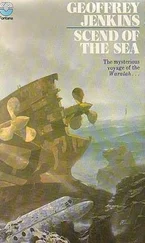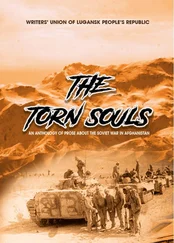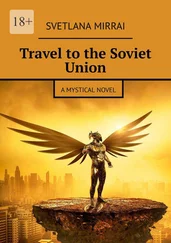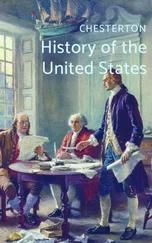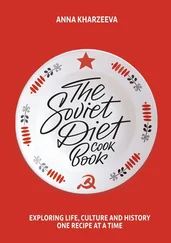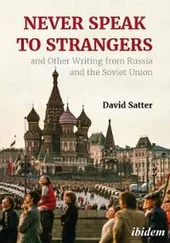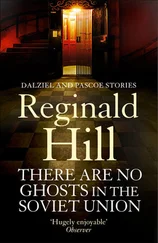At any rate, there can be no doubt that the actual measures adopted even before, but especially during and after the civil war increased the power of the state enormously, and withdrew or nullified the benefits the Bolsheviks had granted to the people in October. The essence of War Communism consisted in (i) the nationalization of virtually all industry, combined with central allocation of resources; (ii) a state trade monopoly (which, because it could not satisfy people’s needs, was accompanied by a vigorous black market); (iii) runaway inflation, leading to a partial suspension of money transactions (welcomed by those Bolsheviks who considered that money had no place in socialist society) and the widespread resumption of barter and of wage payments in kind; (iv) requisitioning of peasant surplus (or even non-surplus) produce. Alec Nove has summed it up trenchantly: ‘A siege economy with a communist ideology. A partly organized chaos. Sleepless, leather-jacketed commissars working round the clock in a vain effort to replace the free market.’
Already gravely overstrained by more than three years of a huge war, and then by the fears and conflicts of revolution, the economy finally collapsed. By 1921 heavy industrial production was at about a fifth of its 1913 level, and in some spheres had virtually ceased altogether. Food production declined somewhat less severely, as far as we can tell from the inevitably unreliable figures we have, but the trading and transport systems to bring it to the consumer had broken down. The situation of both cities and countryside was indescribable. Evgeny Zamyatin thus evoked Petrograd in the winters of War Communism: ‘Glaciers, mammoths, wastes. Black nocturnal cliffs, somehow resembling houses; in the cliffs, caves.... Cave men, wrapped in hides, blankets, wraps, retreated from cave to cave.’ And Pasternak, in Doctor Zhivago , depicted the devastation on the railways:
Train after train, abandoned by the Whites, stood idle, stopped by the defeat of Kolchak, by running out of fuel and by snowdrifts. Immobilized for good and buried in the snow, they stretched almost uninterruptedly for miles on end. Some of them served as fortresses for armed bands of robbers or as hideouts for escaping criminals or political fugitives–the involuntary vagrants of those days–but most of them were communal mortuaries, mass graves of the victims of the cold and typhus raging all along the railway line and mowing down whole villages in its neighbourhood.
In the countryside the peasants had already set about the welcome task of expropriating private land and dividing it up among themselves. Under the terms of the Bolshevik Land Decree, this process was mainly managed by the old village communes, which of course tended to be dominated by the more established and wealthier (or less poor) village families. The redistribution engendered a lot of friction, was probably not strictly egalitarian in its results, and was in any case vitiated by the discovery that, even when all private, church and state land had been absorbed, each peasant household could only add, on average, half a desyatina (just over an acre) to their holding.
Before the process was complete, moreover, the peasants were being importuned by supply officials looking for produce and unable to offer much in the way of money or goods to pay for it. This problem, of course, was inherited from the Provisional Government, but with the increasing hunger of the towns in the winter of 1917–18 it now became much more severe, and clashes became more bitter. Given their political philosophy, the Bolsheviks were bound to regard this problem as one of class warfare, and therefore to react much more sharply than the Provisional Government. In January Lenin suggested that the Petrograd Soviet should send out armed detachments to find and confiscate grain, and that they should be empowered to shoot the recalcitrant. And in May VTsIK and Sovnarkom issued a joint decree dubbing those who were reluctant to deliver grain to the state as a ‘peasant bourgeoisie’ and ‘village kulaks’. ‘Only one way out remains: to answer the violence of the grain owners against the starving poor with violence against the grain hoarders.’ To organize class war in the village, and to make the search for hidden stocks more effective, ‘committees of poor peasants’ ( kombedy ) were set up in every village and volost. Theoretically these were to consist of all peasants whose holdings did not exceed the local norms laid down at the land redistribution. But, in practice, whatever the village’s internal disputes, peasants were more and more reacting with united resentment against outsiders. Few except down-and-outs were prepared to help the hated intruders, and the kombedy degenerated into bands of louts looting for their own benefit or getting senselessly drunk on home-brewed ‘moonshine’. The Bolsheviks themselves quickly came to the conclusion that the kombedy were doing more harm than good, and abolished them in November 1918.
In fact, then, much of the provisioning of the towns was carried on outside the state supplies monopoly. Peasants trudged with their sacks of produce into the towns and there either sold it for high prices or–in view of the unreliability of money–bartered it for manufactured items tendered directly by artisans or workers. Intellectuals and non-manual workers bargained away furniture and family heirlooms in the desperate struggle to stay alive, sometimes themselves going out to the villages to do so: Zoshchenko’s story in which a bewildered peasant accepts a grand piano in return for a sack of grain was only a slight exaggeration. Half of Russia was on the roads or railways, carrying or trundling objects with which to trade. These were the so-called meshochniki , or ‘bagmen’, who became part of the daily scene. Such urban markets as the famous (or notorious) Sukharevka in Moscow became arenas of permanent lively and desperate haggling, as people sought the means to survive. Of course the Communists deeply disapproved of this commerce: it offended their trade monopoly and their ideological instincts. At times they set up road blocks round cities to apprehend the ‘bagmen’. But they never really tried to eradicate the illicit trade, since they knew that to do so would finally bring mass starvation.
These experiences, and the kombedy episode, naturally inflamed peasant feelings against the Communists. Further fuel was added to the flames by the closures of churches and the arrests of priests, as well as by compulsory conscription for the Red Army. Between the spring and autumn of 1918 rural violence against Communists and against supply officials increased markedly. It was still somewhat restrained, perhaps, by the fear that if the Communists were overthrown by the Whites, then the peasants would lose the land they had recently gained. But in the autumn of 1920 and spring of 1921, when the Whites no longer represented any danger, sporadic violence broke out into full-scale peasant insurrection.
According to the Dutch historian Jan Meijer, a typical peasant rising would begin with a meeting of the skhod , the traditional gathering of heads of households. There an act of condemnation would be formulated, and local Communists or members of kombedy taken prisoner or shot. Arms would be seized from the local military training unit (set up by the Red Army), and the requisition team driven off. The peasants would then endeavour to cut themselves completely off from the outside world and to defend this isolation by force.
These risings culminated in the huge insurrections of the black-earth provinces, the Volga basin, North Caucasus and Siberia (the major grain-producing areas) in 1920–1. The largest of them was probably that in western Siberia, where armed rebels may have numbered as many as 60,000: they occupied two large towns (Tobolsk and Petropavlovsk) and cut several stretches of the Trans-Siberian Railway for three weeks in February-March 1921. We know very little about this rising, however, whereas that in the black-earth province of Tambov left somewhat more in the way of written evidence, which has been exhaustively investigated by the American historian, Oliver Radkey. Much of what he discovered may well be true of other risings too.
Читать дальше

